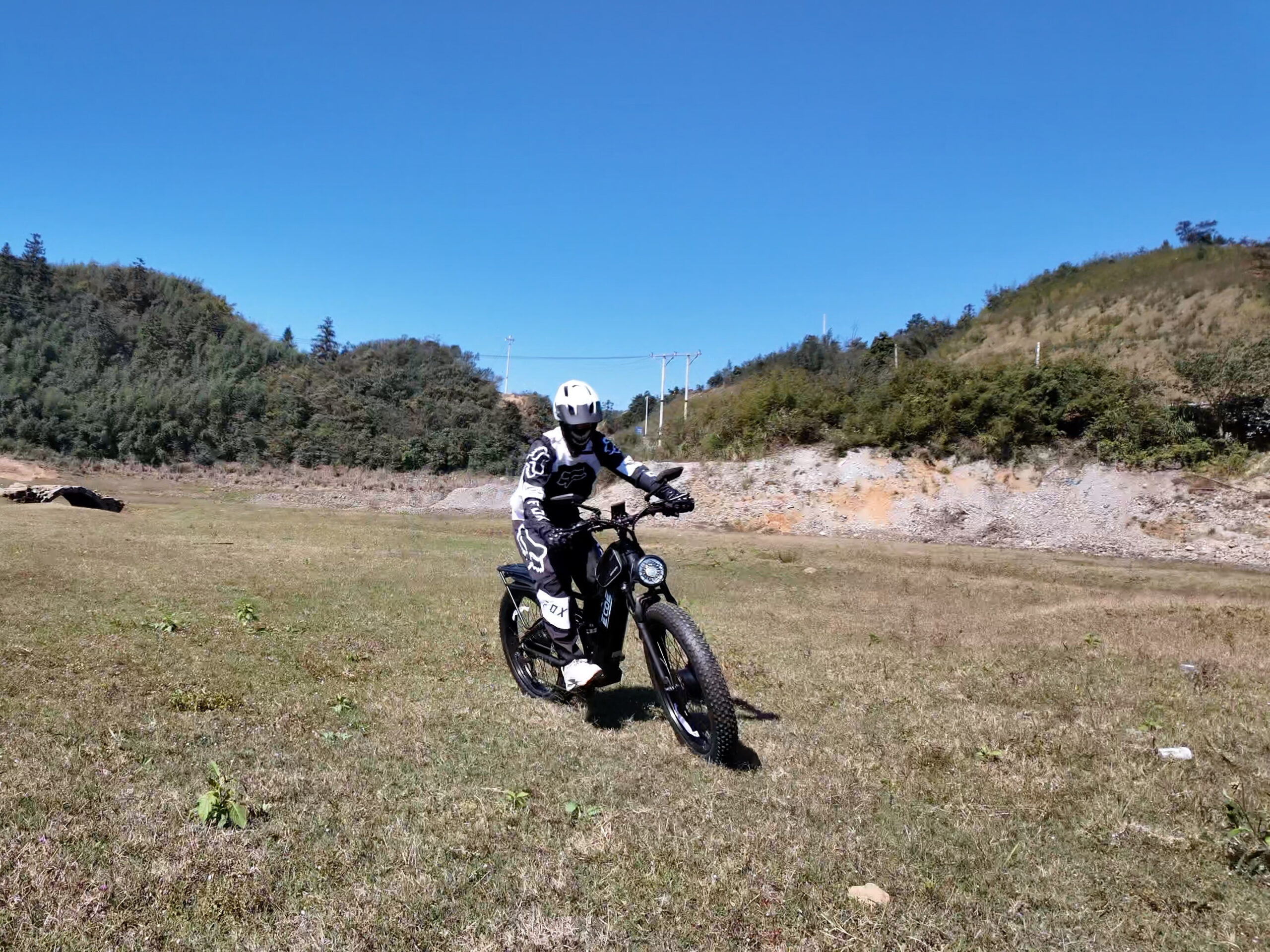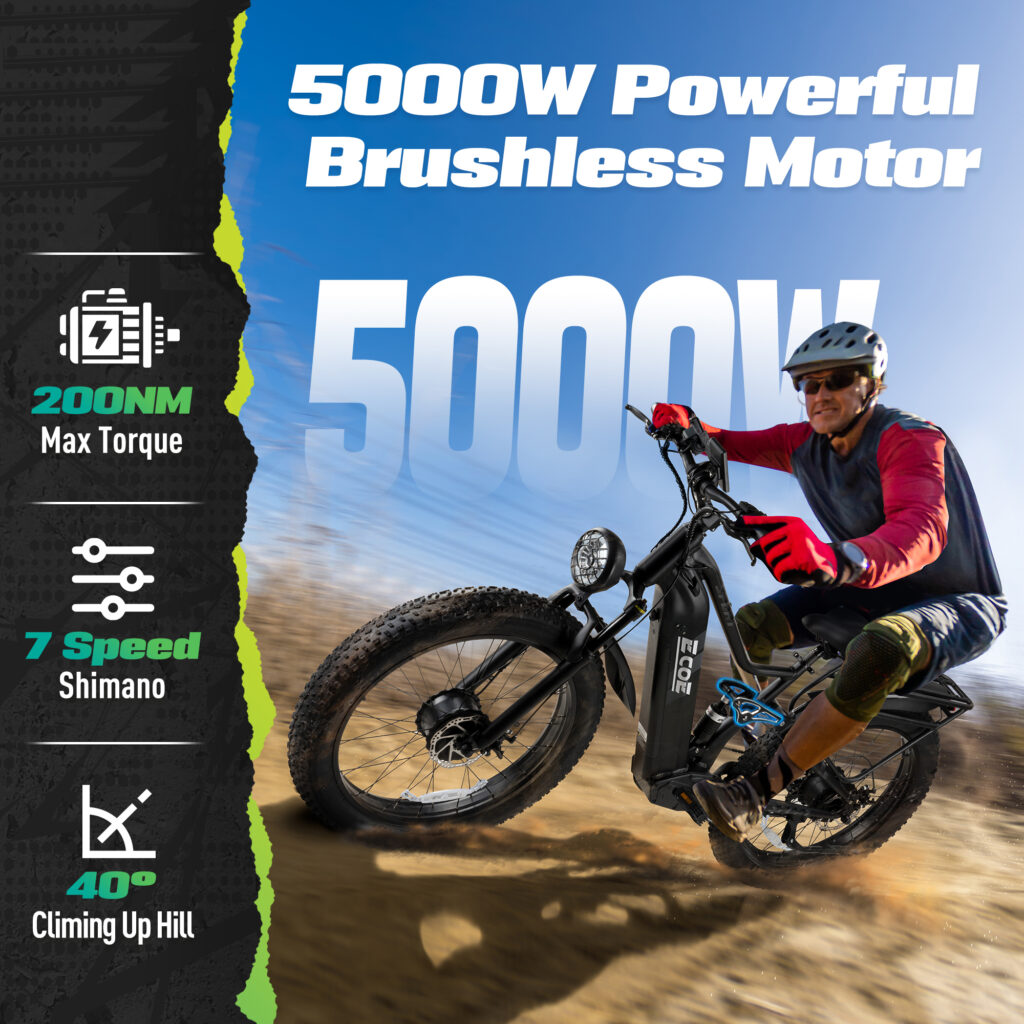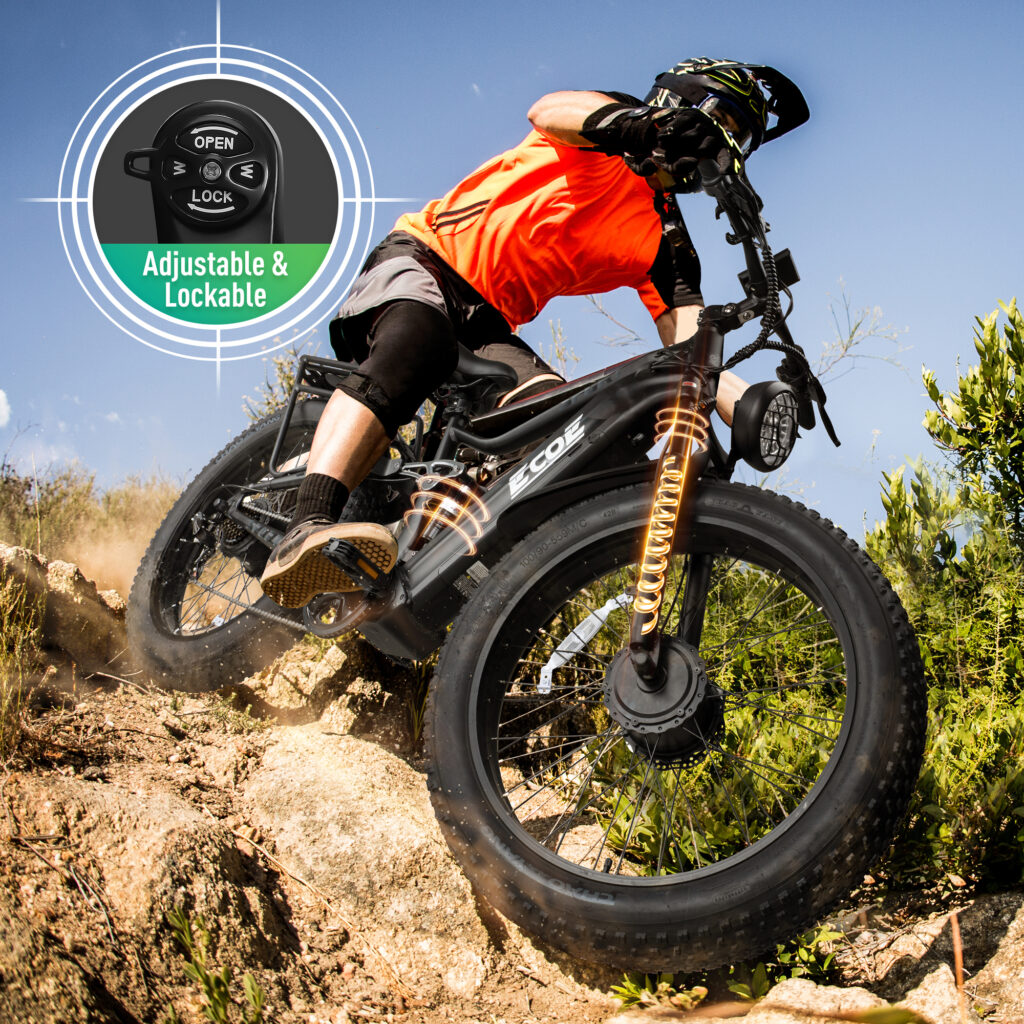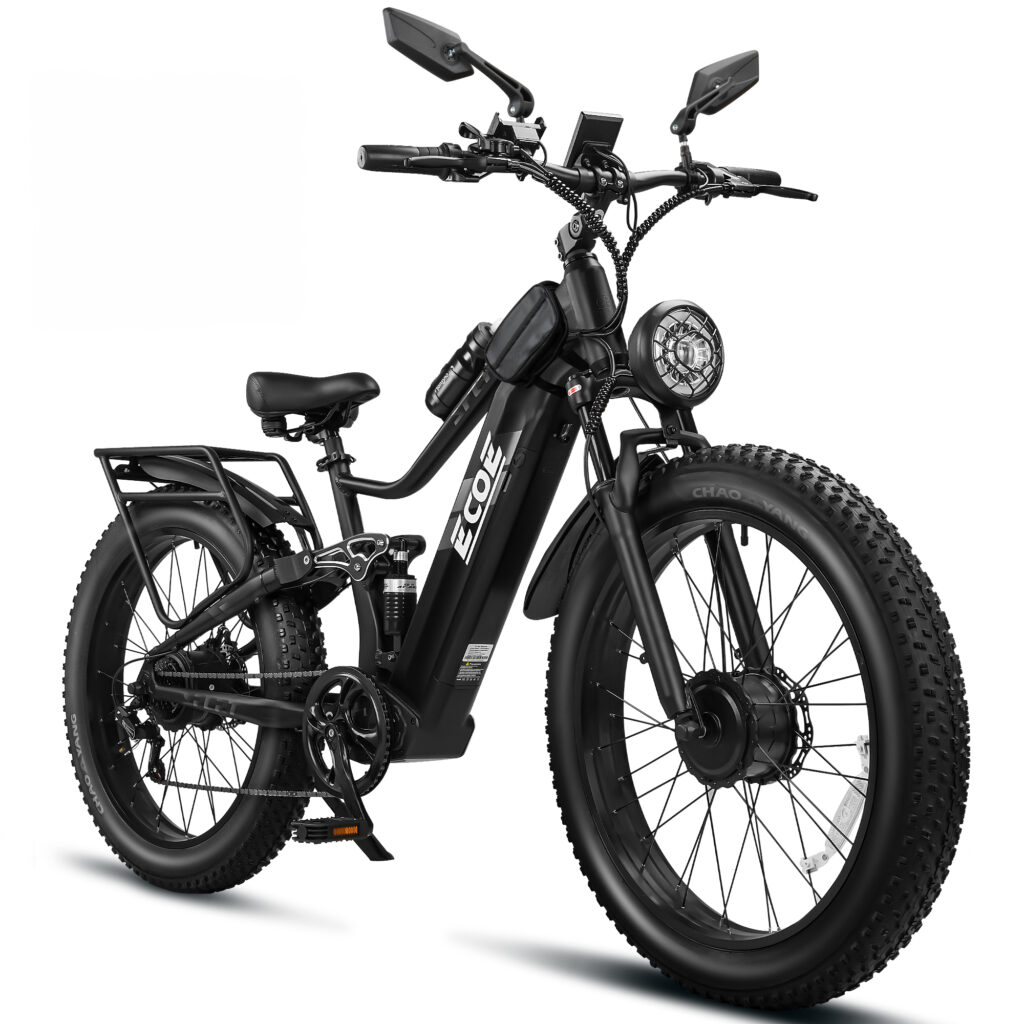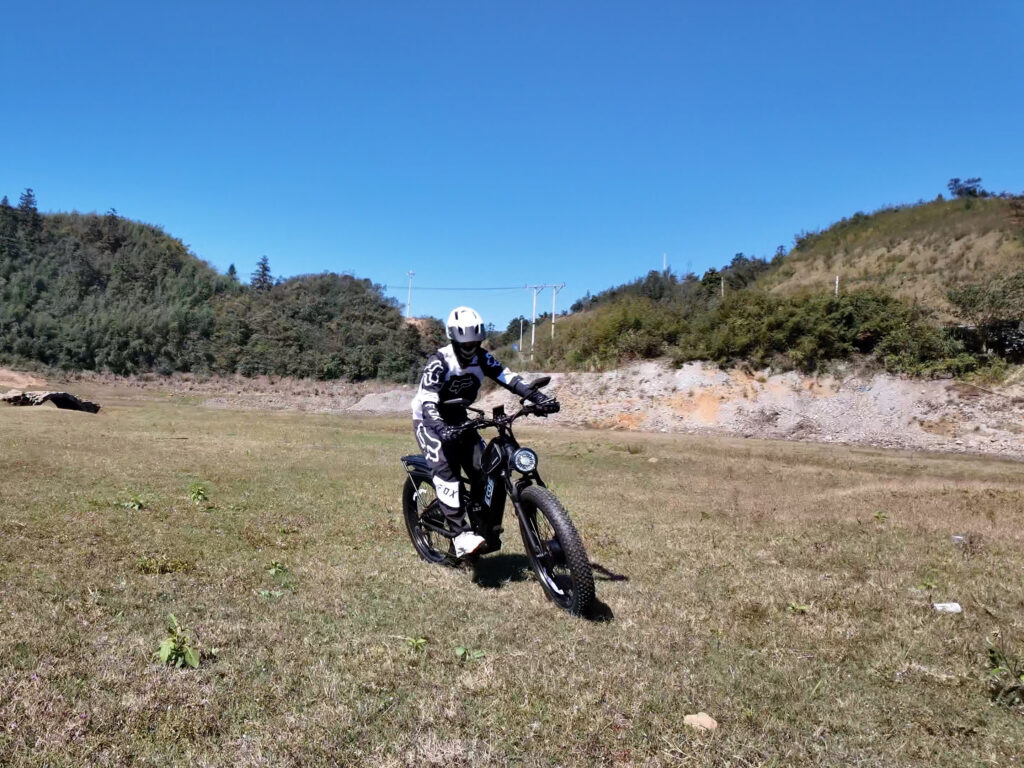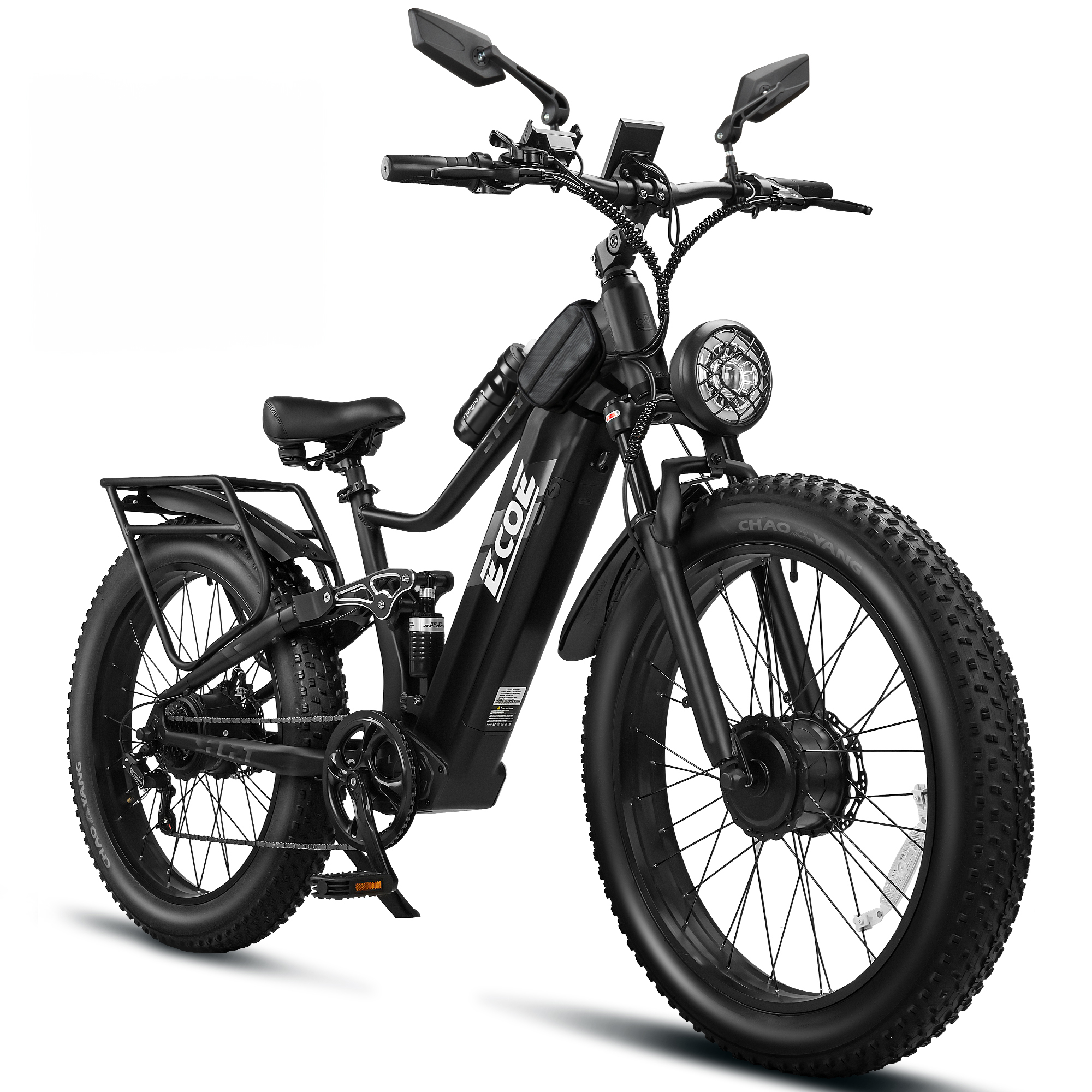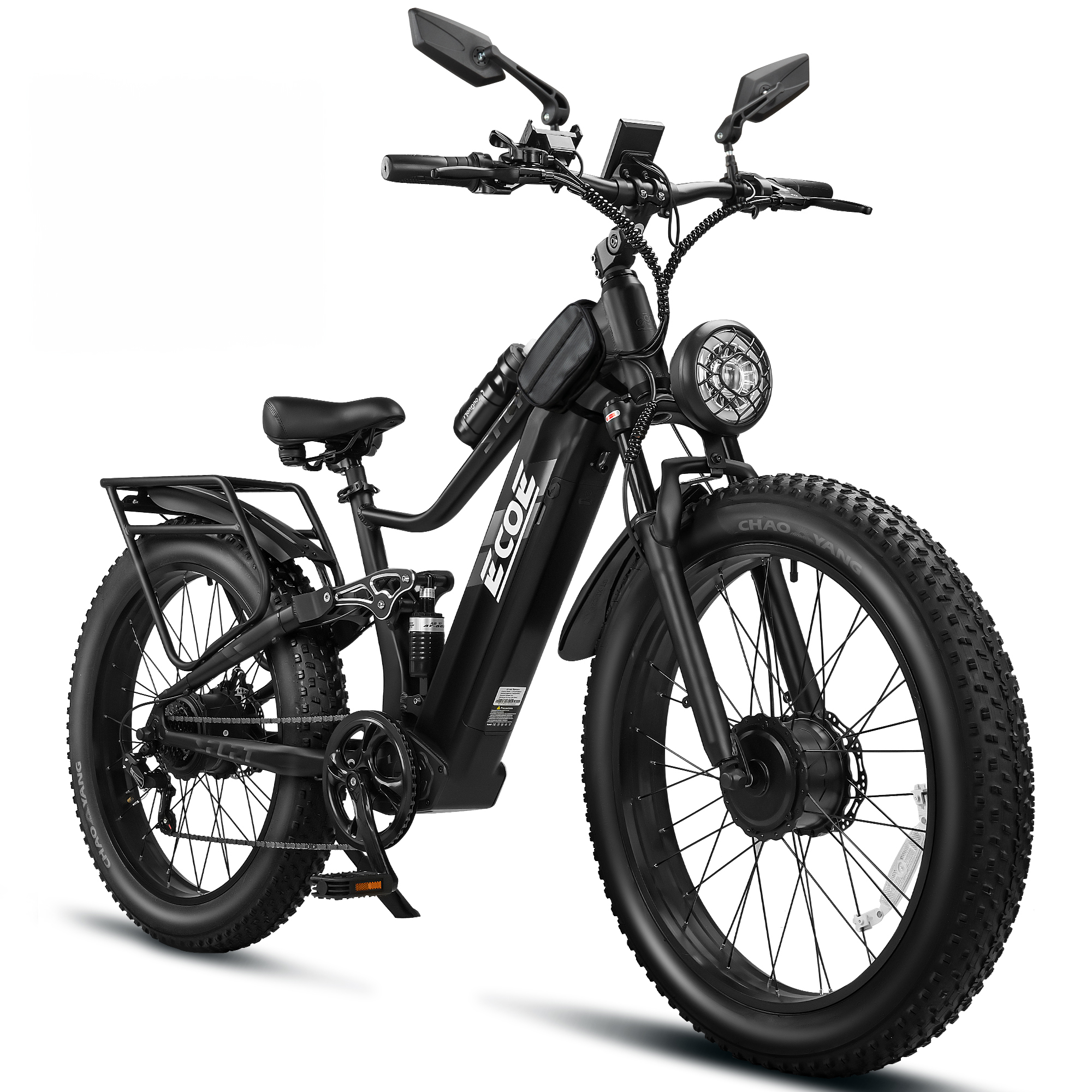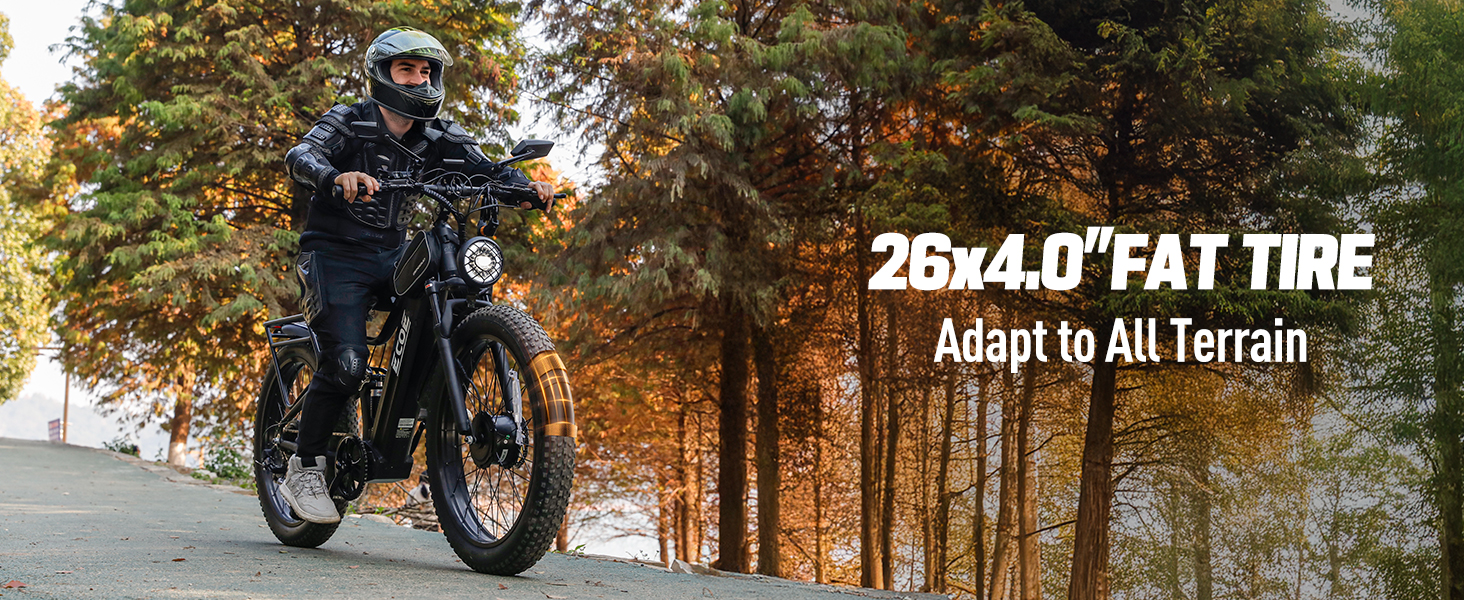
Apr 17, 2025
|
0 comments
Can I remove the speed limiter on an electric bike
Hey there, fellow e-bike enthusiasts! Today, we’re diving into a topic that’s been buzzing around the e-bike community lately: speed limiters. If you’re like me, you might be wondering if there’s a way to unlock the full potential of your electric bike and hit those higher speeds. But before we get into the nitty-gritty, let’s take a moment to appreciate the incredible advancements in e-bike technology that have brought us this far. One brand that truly stands out in this space is EcoE. They’ve been a game-changer in revolutionizing urban mobility with their eco-friendly electric bicycles. Their commitment to sustainability and high-performance products is truly inspiring. Just look at their EcoE 5000W Electric Bike – it’s a beast with a powerful 5000W motor, capable of achieving impressive speeds while adjusting to various road conditions. And with a 60V 32AH battery, you can enjoy a range of up to 80 miles on a single charge. That’s perfect for long rides and adventures! But back to our main question. While it might be tempting to remove the speed limiter, it’s important to consider the legal and safety implications. Speed limiters are in place for a reason, ensuring that e-bike riders can enjoy their rides while staying within safe and legal speed limits. Removing them could not only put you at risk but also lead to potential legal issues. So, while we all love the thrill of speed, it’s crucial to prioritize safety and follow the rules of the road. Let’s keep enjoying our e-bike rides responsibly and look forward to more innovations from brands like EcoE that continue to push the boundaries of what’s possible in urban transportation.
Read more
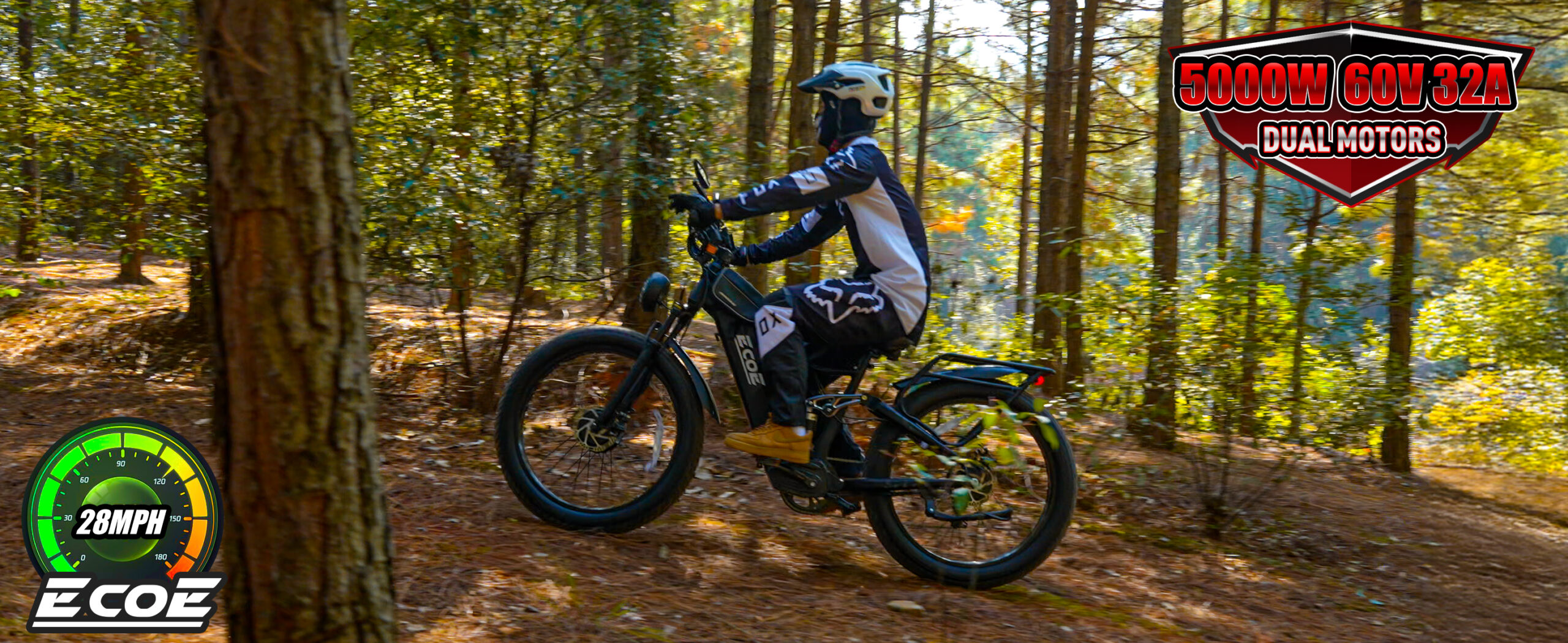
Apr 17, 2025
|
0 comments
Impact of E-Bike Batteries on Maximum Speed
The EcoE 5000W electric bike Powerful Motor: EcoE is equipped with a 60V 5000W high-speed brushless motor. Due to different loads and road conditions, the electric bike drive system provides adjustable assistance, allowing you to stay healthy, relax, and exercise.Accessories: This electric bike accessory set includes a rearview mirror, water bottle holder and bottle, a sturdy phone mount, and a waterproof phone pouch. The reinforced cargo rack allows you to easily carry extra items needed for your ride. Additionally, if you need more accessories, you can purchase a detachable storage rack, passenger safety seat, trailer, and more.60V 32AH Battery: The bike is equipped with a high-capacity, removable 32AH battery, providing longer range per charge and over 1000 charge cycles. With pedal assist, the fat tire e-bike can travel 35-80 miles, depending on riding mode, load, and terrain. You can also purchase a spare battery for extended trips.Comfort and Versatility: This fat tire electric bike comes with dual front suspension and rear shocks to reduce impact and strain during rides. Its 26-inch wheels, 4-inch tires, and SHIM 7-speed system offer excellent grip across diverse terrains. Front and rear disc brakes ensure safe, responsive stopping, whether on mountain trails or city streets. – Battery Types and Performance Parameters The maximum speed of e-bikes is influenced by battery energy density, voltage, and discharge rate. Below is a comparison of different battery types and their speed impacts: Battery Type Energy Density (Wh/kg) Voltage (V) Capacity (Ah) Weight (kg) Cycle Life (Cycles) Speed Impact Pros & Cons Lead-Acid 30–40 48 12–20 25–35 300–500 Low energy density increases weight, limiting acceleration; poor cold-weather performance (30% range drop in winter)67. Low cost, high safety; bulky and short lifespan. Lithium-ion 150–250 48–72 10–30 3–8 800–1500 High energy density reduces weight, enabling higher power output; fast-charging improves stability78. Lightweight, long lifespan; expensive and […]
Read more
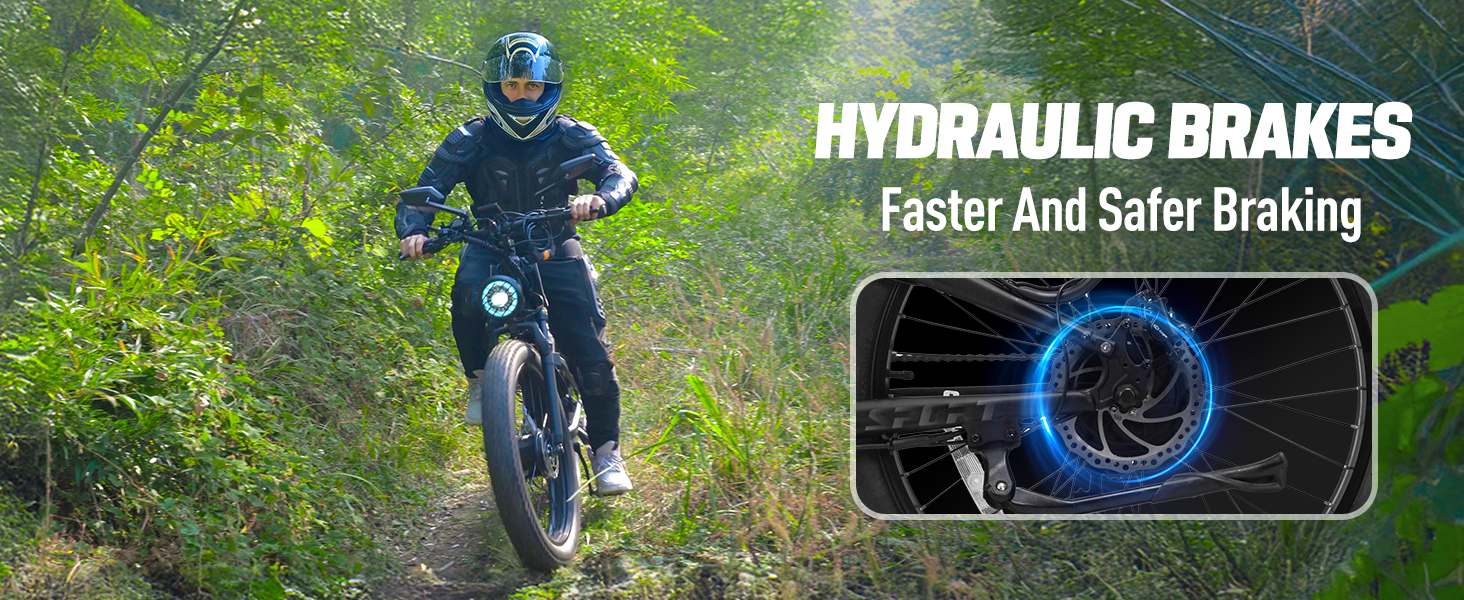
Apr 17, 2025
|
0 comments
Maximum Speed and Technical Realization of Electric Bicycles in the United States
The EcoE 5000W electric bike Powerful Motor: EcoE is equipped with a 60V 5000W high-speed brushless motor. Due to different loads and road conditions, the electric bike drive system provides adjustable assistance, allowing you to stay healthy, relax, and exercise.Accessories: This electric bike accessory set includes a rearview mirror, water bottle holder and bottle, a sturdy phone mount, and a waterproof phone pouch. The reinforced cargo rack allows you to easily carry extra items needed for your ride. Additionally, if you need more accessories, you can purchase a detachable storage rack, passenger safety seat, trailer, and more.60V 32AH Battery: The bike is equipped with a high-capacity, removable 32AH battery, providing longer range per charge and over 1000 charge cycles. With pedal assist, the fat tire e-bike can travel 35-80 miles, depending on riding mode, load, and terrain. You can also purchase a spare battery for extended trips.Comfort and Versatility: This fat tire electric bike comes with dual front suspension and rear shocks to reduce impact and strain during rides. Its 26-inch wheels, 4-inch tires, and SHIM 7-speed system offer excellent grip across diverse terrains. Front and rear disc brakes ensure safe, responsive stopping, whether on mountain trails or city streets. – 1. Legal Speed Limits and Classification Standards According to U.S. federal regulations (Title 15, U.S. Code § 2085(b)) and state laws, electric bicycles are classified into three categories based on speed and functionality: Type Max Speed (mph) Propulsion Method Regulatory Status Typical State Requirements (Examples) Class 1 ≤20 Pedal-assisted only Non-motor vehicle Permitted on bike lanes (e.g., California) Class 2 ≤20 Throttle-assisted Non-motor vehicle Must display speed limit on frame (e.g., New York) Class 3 ≤28 Pedal-assisted with higher power Motor vehicle in some states Helmet required (e.g., Colorado) Federal Technical Standards: 2. Illegal Modification Speed Range and Techniques Despite regulations, some users […]
Read more

Apr 17, 2025
|
0 comments
How fast does a 1000w electric bike go
Hey, bike lovers! Today, let’s dive into a super interesting topic: just how fast can electric bicycles go? I’ve always been curious about this, and my curiosity was finally satisfied when I discovered EcoE’s 5000W electric bicycle. The speed is simply astonishing! EcoE is truly a hidden gem in the world of electric bicycles. Their bikes are not only powerful but also incredibly user-friendly in design. Take the 5000W motor, for example. The acceleration is super fast, and it can handle all kinds of road conditions with ease, whether it’s urban streets or rugged trails. Moreover, the range of this bike is truly impressive. With a 60V 32AH battery, it can cover up to 80 miles on a single charge, making it perfect for long-distance rides! And those super practical accessories, like mirrors, phone holders, and racks, are just so convenient. What I love the most is the smart display, which shows speed, mileage, and battery level in real-time, giving you a sense of control while riding. Every time I get on it, it feels like I’m starting an adventure. It’s fast, stable, and super enjoyable! In short, if you’re also interested in electric bicycles, EcoE is definitely a great choice. It’s not only fast but also super eco-friendly, making your travel greener and more efficient!
Read more

Apr 16, 2025
|
0 comments
How fast can electric bikes legally go
As a convenient mode of transportation, the speed limits of electric bicycles have always been a focal point of public attention. This article will explore the legal speed limits for electric bicycles and, combined with practical cases, analyze the speed regulations under different scenarios. I. Legal Speed Limits for Electric Bicycles According to U.S. regulations, the speed limits for electric bicycles vary by type. Class 1 and Class 2 electric bicycles typically have a maximum speed limit of 20 miles per hour (approximately 32 kilometers per hour), while Class 3 electric bicycles (also known as speed-assisted bicycles) can reach a maximum speed of 28 miles per hour (approximately 45 kilometers per hour). These speed limits are designed to reduce traffic casualties and protect the life and property safety of the public. II. Actual Speed Usage Despite clear legal provisions, speeding on electric bicycles is still relatively common in practice. Many electric bicycles can achieve higher speeds through modifications or speed limit removals. For example, some electric bicycles can reach speeds of 35 miles per hour or even higher after the speed limit is removed. This speeding behavior not only violates the law but also increases the risk of traffic accidents. III. Speed and Safety of Electric Bicycles Excessive speed is one of the main factors causing traffic accidents. Research indicates that the higher the speed, the greater the probability of an accident, and the braking distance correspondingly increases. Therefore, adhering to speed limits is not only a legal requirement but also an essential measure to ensure the safety of oneself and others. IV. Speed and Range of Electric Bicycles Speed not only affects safety but also impacts the range of electric bicycles. Generally, the faster the speed, the quicker the battery consumption, and the shorter the range. For example, when […]
Read more

Apr 16, 2025
|
0 comments
What is the maximum speed of an electric bike
The maximum speed of an electric bike varies depending on factors such as motor power, battery capacity, and local regulations. While some e-bikes are designed for high-speed performance, others are limited by legal restrictions to ensure safety。In this article, we will explore the speed limits of different types of e-bikes and the factors that influence their performance. Understanding the Speed Limits Electric bikes, like any other type of vehicle, are regulated by specific laws and regulations. In the United States, for example, the maximum speed for an electric bike is usually limited to 20 mph。However, some high-performance models can reach speeds of up to 28 mph or even higher.It is important to note that riding an e-bike over the legal speed limit can result in fines or other legal consequences. Factors Affecting Speed The speed of an electric bike is influenced by several factors, including motor power, battery capacity, and the weight of the rider。For instance, a 5000W motor can theoretically reach speeds in the range of 50mph。However, the actual speed may vary depending on the specific model and conditions. High-Performance Models Some e-bikes are designed for high-speed performance. For example, the Stealth B-52 can reach top speeds of up to 50mph。These models often come with powerful motors and advanced features such as motorcycle-grade brakes。However, such high speeds may not be suitable for all riders and conditions. Safety Considerations While high speed can be thrilling, it also comes with risks. According to a study, the higher the speed, the greater the risk of accidents。Therefore, it is important to prioritize safety when choosing an e-bike。This includes not only following legal speed limits but also ensuring that the bike is equipped with proper safety features such as good brakes and lights. Personal Experience and Feedback We recently tested several high-powered e-bikes, including […]
Read more

Apr 16, 2025
|
0 comments
Maximum Speed and Technical Realization of Electric Bicycles in China
The EcoE 5000W electric bike Powerful Motor: EcoE is equipped with a 60V 5000W high-speed brushless motor. Due to different loads and road conditions, the electric bike drive system provides adjustable assistance, allowing you to stay healthy, relax, and exercise.Accessories: This electric bike accessory set includes a rearview mirror, water bottle holder and bottle, a sturdy phone mount, and a waterproof phone pouch. The reinforced cargo rack allows you to easily carry extra items needed for your ride. Additionally, if you need more accessories, you can purchase a detachable storage rack, passenger safety seat, trailer, and more.60V 32AH Battery: The bike is equipped with a high-capacity, removable 32AH battery, providing longer range per charge and over 1000 charge cycles. With pedal assist, the fat tire e-bike can travel 35-80 miles, depending on riding mode, load, and terrain. You can also purchase a spare battery for extended trips.Comfort and Versatility: This fat tire electric bike comes with dual front suspension and rear shocks to reduce impact and strain during rides. Its 26-inch wheels, 4-inch tires, and SHIM 7-speed system offer excellent grip across diverse terrains. Front and rear disc brakes ensure safe, responsive stopping, whether on mountain trails or city streets. – 1. Legal Speed Limit and Classification Standards According to the Technical Safety Specifications for Electric Bicycles (GB 17761—2024) effective September 1, 2025, the maximum design speed of legal electric bicycles shall not exceed 25 km/h, and the motor will automatically stop power supply when exceeding this speed 23. This standard is enforced through: 2. Illegal Modification Speed Range and Techniques Despite regulations, some users modify vehicles to achieve 40-100 km/h, posing severe risks 56. Common modifications include: Modified Component Typical Parameters Speed Increase Risk Level Motor 1000-5000W (original 400W) +20-80 km/h ★★★★☆ Battery 72V 30Ah lithium (original 48V) +15-30 km/h ★★★★★ Controller Disable speed limit module +10-20 km/h ★★★☆☆ […]
Read more
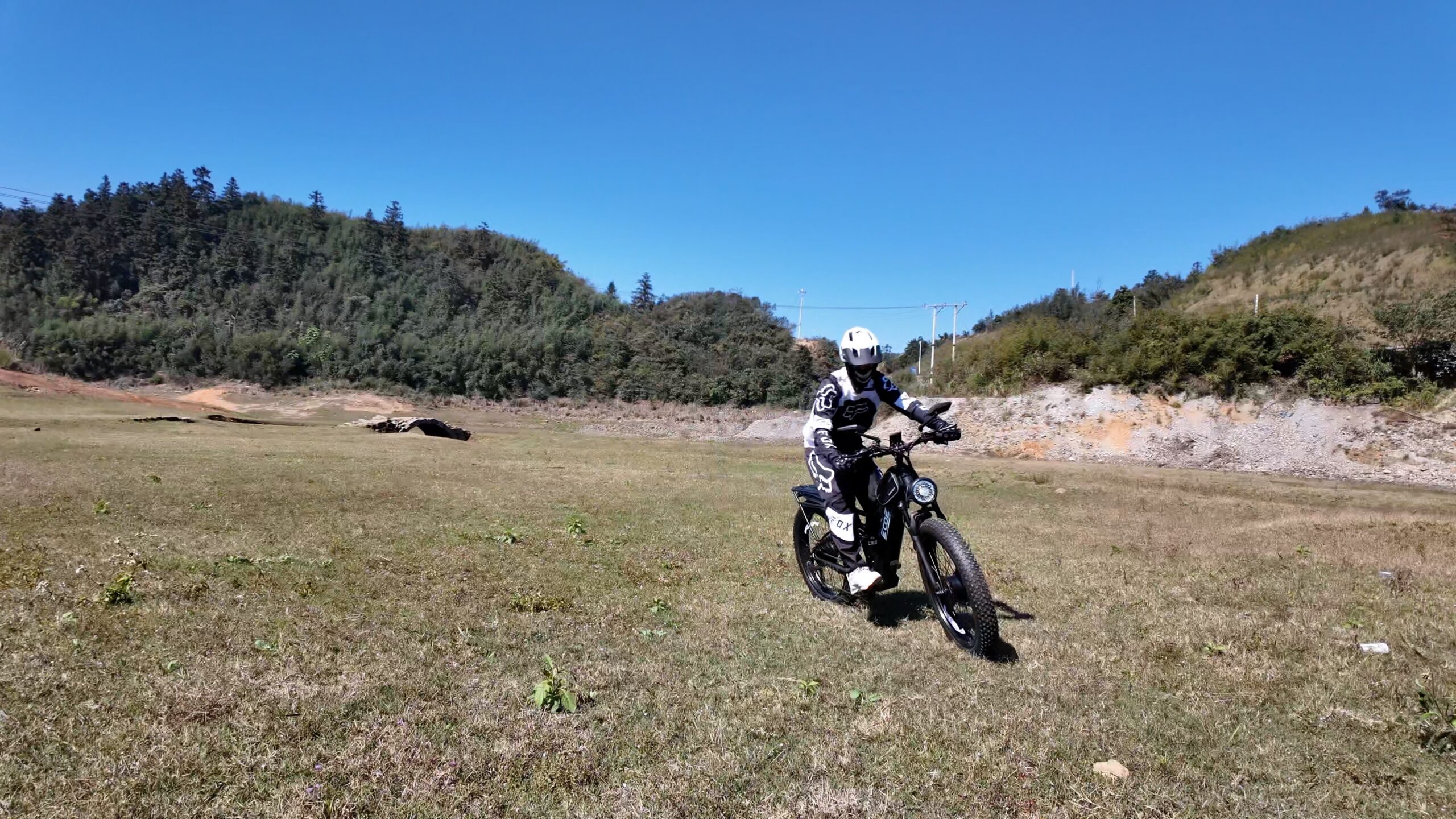
Apr 16, 2025
|
0 comments
Development History of Maximum Speed for Electric Bicycles (2020s–2025)
The EcoE 5000W electric bike Powerful Motor: EcoE is equipped with a 60V 5000W high-speed brushless motor. Due to different loads and road conditions, the electric bike drive system provides adjustable assistance, allowing you to stay healthy, relax, and exercise.Accessories: This electric bike accessory set includes a rearview mirror, water bottle holder and bottle, a sturdy phone mount, and a waterproof phone pouch. The reinforced cargo rack allows you to easily carry extra items needed for your ride. Additionally, if you need more accessories, you can purchase a detachable storage rack, passenger safety seat, trailer, and more.60V 32AH Battery: The bike is equipped with a high-capacity, removable 32AH battery, providing longer range per charge and over 1000 charge cycles. With pedal assist, the fat tire e-bike can travel 35-80 miles, depending on riding mode, load, and terrain. You can also purchase a spare battery for extended trips.Comfort and Versatility: This fat tire electric bike comes with dual front suspension and rear shocks to reduce impact and strain during rides. Its 26-inch wheels, 4-inch tires, and SHIM 7-speed system offer excellent grip across diverse terrains. Front and rear disc brakes ensure safe, responsive stopping, whether on mountain trails or city streets. – 2020–2023: Policy Tightening and Market Competition 2024–2025: Technological Breakthroughs and Regulatory Upgrades Period Technical Advancements Max Speed (km/h) Notable Models/Regulations Impact & Significance 2020 New National Standard enforced 25 (legal)40–80 (modified) Hello, Yadea compliant models Market consolidation, SME exits 2022 Lithium battery to ¥300/set 30 (lightweight) Ninebot E Series Urban commuters rose to 65% 2023 Smart speed-limit chips widespread 25 (locked) Ninebot F0 Series Modification market shrank 30% 2024 Sodium-ion batteries trial 35 (prototype) CATL×Yadea collaboration 100 km range, policy-limited speed 2025 Anti-tampering design mandate 25 (legal) GB17761-2024 compliant models Top 5 brands hold 75% market share
Read more
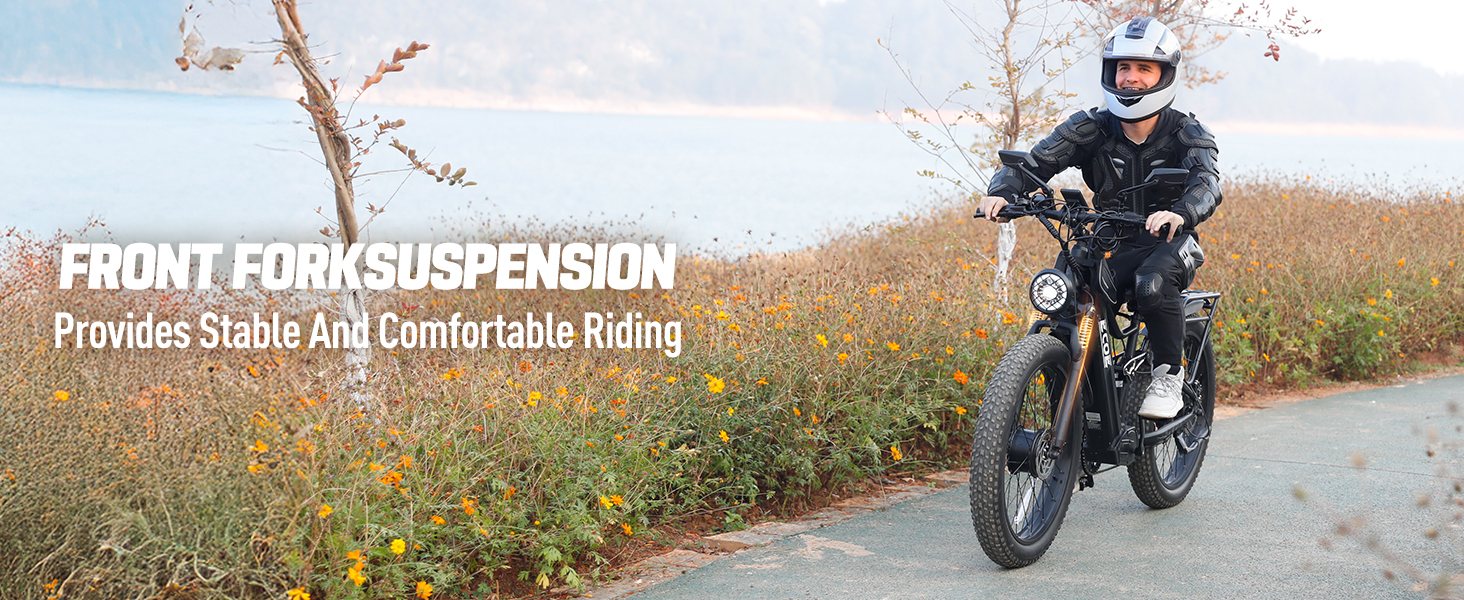
Apr 15, 2025
|
0 comments
How Fast Can I Go on My E-Bike? Understanding Speed Limits and Factors
Electric bikes, or e-bikes, have become increasingly popular as an alternative mode of transport, offering convenience, speed, and eco-friendliness. One of the most common questions from riders is: “How fast can I go on my e-bike?” In this article, we’ll explore the factors that determine an e-bike’s speed, including motor power, battery capacity, legal restrictions, and more. Whether you’re using an e-bike for daily commuting or recreational purposes, understanding these factors will help you get the most out of your ride. When it comes to e-bike speed, several factors come into play. Generally, the top speed of an e-bike is determined by its motor power, battery capacity, and legal restrictions. Most e-bikes, especially those designed for commuting or recreational use, will have a maximum speed of around 20 mph (32 km/h) to 28 mph (45 km/h), depending on the classification of the e-bike and where it’s being used. For example, Class 1 e-bikes, which only provide pedal assistance without throttle control, are typically limited to 20 mph (32 km/h) in most regions. Meanwhile, Class 3 e-bikes, which are pedal-assist bikes with throttle capabilities, can go up to 28 mph (45 km/h). However, there are some high-performance e-bikes, like those with 5000W motors from brands like Ecoe, that can exceed these limits in specific conditions. One of the primary factors that affect how fast you can go on your e-bike is its motor power. E-bikes come with motors that typically range from 250W to 5000W, with 500W to 750W motors being the most common in mid-range bikes. The power of the motor directly influences the acceleration and top speed of the bike, allowing more powerful models to sustain higher speeds more easily. However, these high-powered bikes are usually not allowed to travel at such high speeds in certain areas unless special […]
Read more
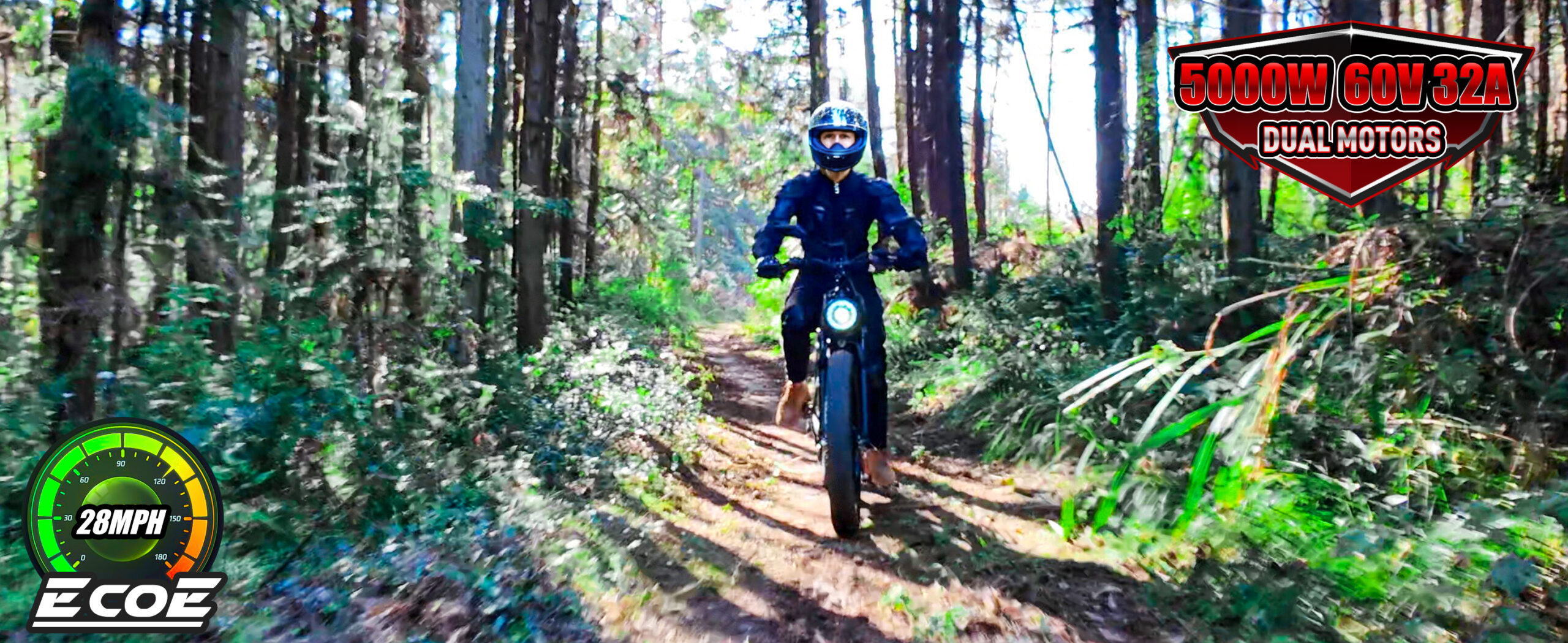
Apr 15, 2025
|
0 comments
History of E-Bike Maximum Speed (2000s–2010s)
The EcoE 5000W electric bike Powerful Motor: EcoE is equipped with a 60V 5000W high-speed brushless motor. Due to different loads and road conditions, the electric bike drive system provides adjustable assistance, allowing you to stay healthy, relax, and exercise.Accessories: This electric bike accessory set includes a rearview mirror, water bottle holder and bottle, a sturdy phone mount, and a waterproof phone pouch. The reinforced cargo rack allows you to easily carry extra items needed for your ride. Additionally, if you need more accessories, you can purchase a detachable storage rack, passenger safety seat, trailer, and more.60V 32AH Battery: The bike is equipped with a high-capacity, removable 32AH battery, providing longer range per charge and over 1000 charge cycles. With pedal assist, the fat tire e-bike can travel 35-80 miles, depending on riding mode, load, and terrain. You can also purchase a spare battery for extended trips.Comfort and Versatility: This fat tire electric bike comes with dual front suspension and rear shocks to reduce impact and strain during rides. Its 26-inch wheels, 4-inch tires, and SHIM 7-speed system offer excellent grip across diverse terrains. Front and rear disc brakes ensure safe, responsive stopping, whether on mountain trails or city streets. – The 2000s to 2010s marked rapid advancements in e-bike technology, driven by mass production in China and global demand. Despite increasing regulatory speed limits, technological innovations and market needs pushed performance improvements, while illegal modifications became widespread. Key phases include: Table: Key Milestones & Speed Evolution Year Event/Policy Max Speed (km/h) Technical/Market Features 2000 Mass Production in China 20 Lead-acid batteries, hub motors 2004 GB 17761-1999 Enforcement 20 (regulated) Standardization of speed limits 2005 Brushless Motor Adoption 25 (actual) Efficiency improvements, speed bypass 2007 Market Boom 35-40 (modified) Widespread illegal modifications 2010 New Standard Draft 25 (proposed) Policy-market tensions intensify 2013 Lithium Battery […]
Read more
